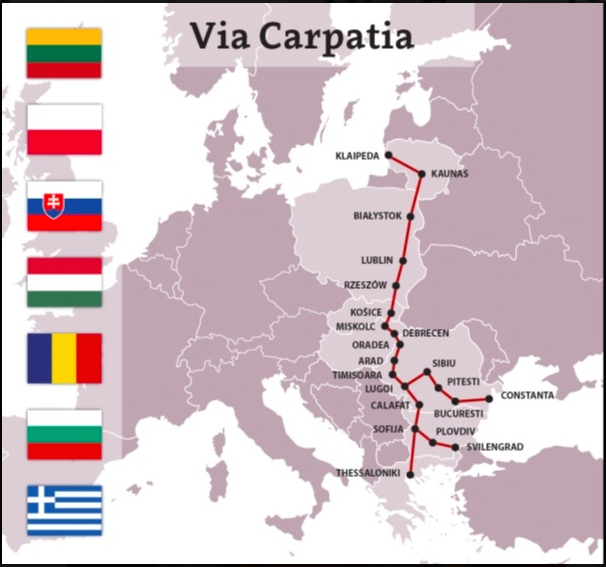Ruta de navegación
Menú de navegación
Blogs
Entries with label the silk road .
[Bruno Maçães, Belt and Road. A Chinese World Order. Penguin. Gurgaon, India, 2019. 227p.]
review / Emili J. Blasco
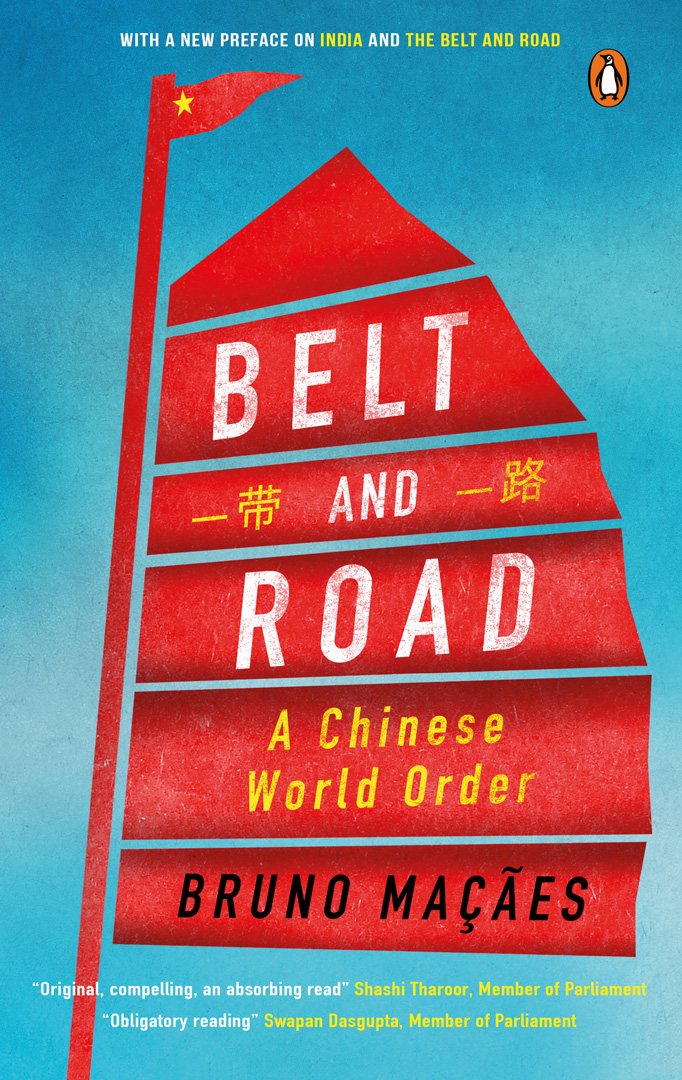 |
Covered the moment of literature devoted to presenting the novelty of the project A Chinese leader of the New Silk Road, Bruno Maçães leaves aside many of the specific specifics of the Chinese initiative to deal with its more geopolitical aspects. That is why throughout the book Maçães uses the name Belt and Road all the time, instead of its acronyms – OBOR (One Belt, One Road) or the lately more used BRI ( Belt and Road Initiative) – because he is not referring so much to the layout of transport connections themselves as to the new world order that Beijing wants to model.
Through this economic integration, according to Maçães, China could project power over two-thirds of the world, including Central and Eastern Europe, in a process of geographical cohesion of Eurasia to which this politician and the European Union has already been able to achieve this goal. researcher He dedicated his earlier work.
Compared to other essays on the New Silk Road, this one directs a lot of attention to India (this is true in its general content, but also in this one). review A special edition has been used for that country, with a particular introduction).
Maçães grants India the role of core topic vault in the project integrator of Eurasia. If India decides not to participate at all and instead gamble on the alternative promoted by the United States, along with Japan and Australia, then the design China will not reach the dimension desired by Beijing. "If India decides that life in the Western order will be better than under alternative arrangements, the Belt and Road will struggle to achieve its original ambition," says the author.
However, Maçães believes that the West is not entirely that attractive to the subcontinent. In that Western order, India can only aspire to a secondary role, while the rise of China "offers it the exciting possibility of a genuinely multipolar, rather than merely multilateral, world in which India can legitimately hope to become an autonomous center of geopolitical power," at least on the same level as a declining Russia.
Despite these apparent advantages, India will not go completely to either side, Maçães predicts. "It will never join the Belt and Road because it could only consent to join China in a project that it was new. And it will never join a U.S. effort to rival the Belt and Road unless the U.S. makes it less confrontational." So, "India will leave everyone waiting, but it will never make a decision on the Belt and Road."
Without the involvement of Delhi, or even more so, with resistance from the Indian leadership, neither the US nor China's vision can be fully brought to fruition. internshipMaçães continues. Without India, Washington may be able to preserve its current model of alliances in Asia, but their ability to compete on the scale of the Belt and Road would collapse; For its part, Beijing is realizing that it alone cannot provide the financial resources needed for the ambitious project.
Maçães warns that China has "ignored and disdained" India's positions and interests, which may end up being "a big miscalculation." He believes that China's impatience to start building infrastructure, due to the need to demonstrate that its initiative is a success, "can become the worst enemy."
An adventure that the Chinese can correct the shot. "It is likely – perhaps even inevitable – that the Belt and Road will grow more and more decentralized, less Chinese-centric," he says, commenting that in the end this new Chinese order would not be so different from the structure of the existing world order led by Washington, where "the United States insists on being recognized as the state at the apex of the international power hierarchy" and leaves some autonomy to each regional power.
If Maçães puts India in a status Non-alignment plenary session of the Executive Council, does provide for an unequivocal partnership of that country with Japan. In his view, it is a "symbiotic" relationship, in which India sees Japan as its first source of technology, while Japan sees the Indian navy as "a partner indispensable in its efforts to contain Chinese expansion and safeguard freedom of navigation" in the region's seas.
As for Europe, Maçães sees it in the difficult position "of not being able to oppose a project economic integration, while it is equally incapable of joining as a mere participant" in the Chinese initiative, in addition to the seed of division that the project in the European Union.
Bangladesh to Pakistan and Djibouti
Despite the above-mentioned differences, Maçães believes that the relationship between China and India can develop positively, even if there is some element of latent conflict, encouraged by a certain mutual distrust. The commercial linkage of two such immense markets and production centers will generate economic ties "called dominating" the economy. Economics towards the middle of this century.
This movement of goods between the two countries will make Bangladesh and Myanmar the centre of a major trade corridor.
For its part, Pakistan, in addition to being a corridor for the exit to the Indian Ocean from western China, will be increasingly integrated into the Chinese production chain. Specifically, it can feed raw materials and basic manufactures to the textile industry that China is developing in Xinjiang, its export gateway to Europe for goods that can optimize rail transport. The capital of that province, Urumqi, will become the fashion capital of Central Asia in the next decade. agreement with the forecast of Maçães.
Another interesting observation is that the shrinking of Eurasia and the development of internal transport routes between the two ends of the supercontinent, may cause the container ports of the North Sea (Amsterdam, Rotterdam, Hamburg) to lose weight in trade between Europe and China at the expense of greater transit of those in the Mediterranean (Piraeus, especially).
The author also ventures that Chinese infrastructure works in Cameroon and Nigeria can help facilitate connections between these countries and Doralé, the port that China manages in Djibouti, which in this way, through these trans-African routes, could become "a serious rival" to the Suez Canal.
If China has its first, and so far only, military base outside its territory, it must be borne in mind that Beijing may give a possible military use to other ports whose territory is not the same. management has assumed. As Maçães recalls, in 2016 China approved a framework This is a legal law that obliges civilian companies to support military logistics operations requested by the Chinese Navy.
These are all aspects of a thought-provoking book that does not allow itself to be carried away by the determinism of China's rise, nor by an antagonistic vision that denies the possibility of a new world order. It is the work of a European who, although he served in the Portuguese Ministry of Foreign Affairs as a director for Europe, is realistic about the EU's weight in the design of the world.
[Bruno Maçães, The Dawn of Eurasia. On the Trail of the New World Order. Allen Lane. Milton Keynes, 2018. 281 pp]
review / Emili J. Blasco
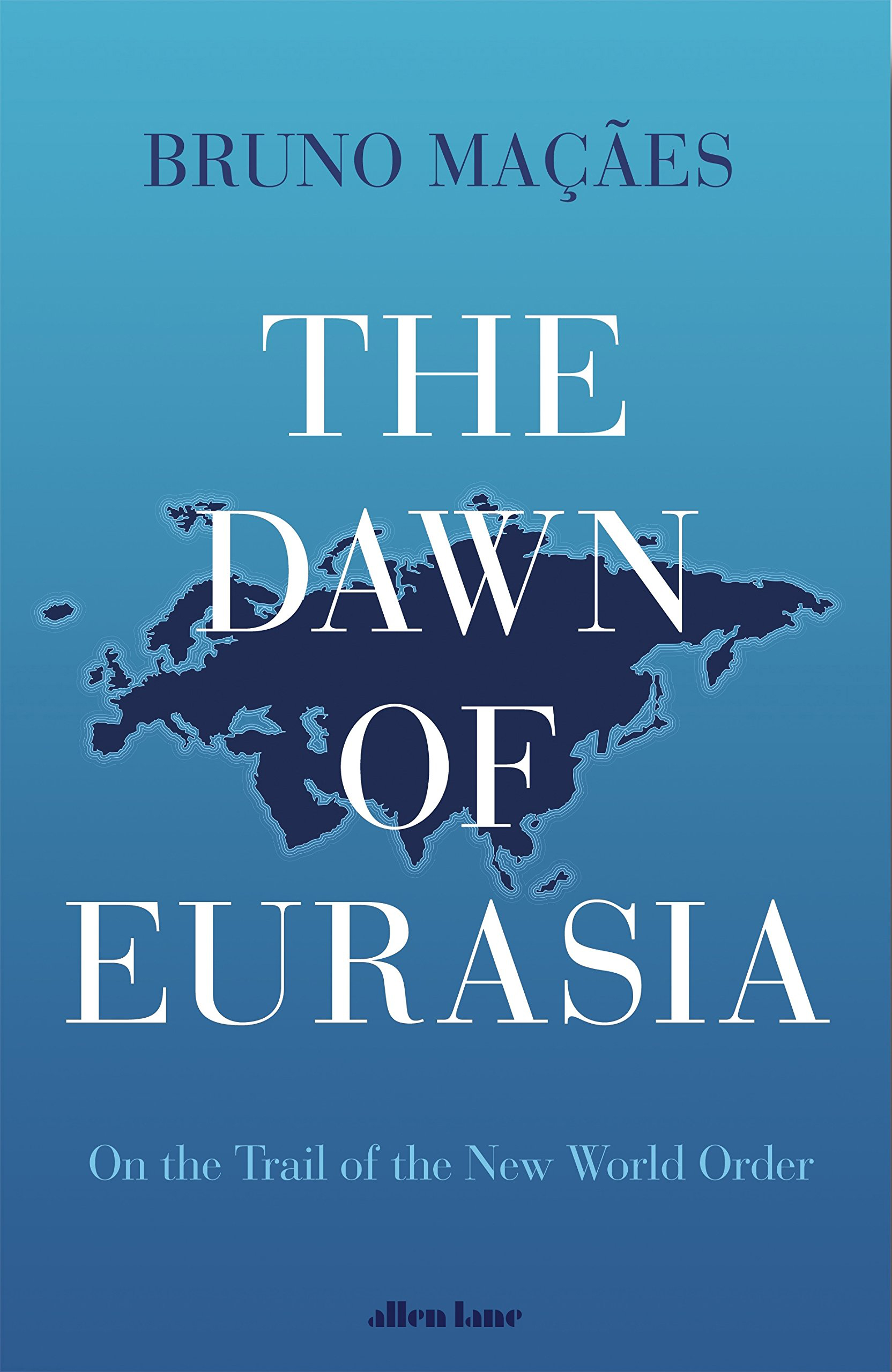 |
The discussion on the emergence of Eurasia as an increasingly compact reality, no longer as a mere geographical description that was conceptually a chimera, owes much to the contribution of Bruno Maçães; particularly to his book The Dawn of Eurasia, but also to his continuous proselytizing to different audiences. This Portuguese diplomat with research activity in Europe notes the consolidation of the Eurasian mass as a single continent (or supercontinent) to all intents and purposes.
"One of the reasons we have to start thinking about Eurasia is because this is how China is increasingly looking at the world (...) China is already living a Eurasian age," says Maçães. What is new about it, he says, "is not that there are such connections between continents, but that, for the first time, they work both ways. Only when the influence flows in both directions can we speak of an integrated space." The Silk Belt and Road Initiative, especially its overland route, sample that China is no longer looking only to the Pacific, but is also contemplating new routes to Europe.
Maçães urges Europe to adopt a Eurasian perspective, for three reasons: because Russia and China have one; because most of the big foreign policy issues of our time have to do with how Europe and Asia are connected (Ukraine, refugee crisis, energy and trade); and because all the security threats of the coming decades will play out in a Eurasian context. Maçães adds a final reason why Europe should become more actively involved in the Eurasian integration project : it is the way to combat the forces of disintegration that exist within Europe itself.
From the various considerations included in the book, some suggestive ideas could be highlighted. One is that Russia's historic problems of identity, straddling Europe and Asia - seeing itself as different from the Europeans and at the same time being attracted by the modernity of the West - are now being replicated in the East, where China is on its way to creating a second pole of economic growth and integration in the supercontinent. If Europe is one of the poles and Asia (China and the other successful countries of the Far East) the other, then what is Russia, if it does not fully respond to the European and Asian identities?
The Silk Belt and Road Initiative gives geopolitical importance to Central Asia, as Maçães reviews. Thus, China needs a clear dominance of Xinjiang, its westernmost province and the gateway to the Central Asian republics. The land route to Europe cannot exist without the Xinjinag segment, but at the same time the exhibition of this Uyghur-majority territory to trade and modernization could accentuate its separatist aspirations. Just northwest of Xinjiang is the ex-Soviet republic of Kazakhstan, a vast country of great agricultural value, where Chinese attempts to buy land are being viewed with high suspicion from its capital, Astana. Maçães estimates that if Russia were to try to reintegrate Kazakhstan into its sphere of influence, as vehemently as it has done with Ukraine, "China would not stand aside."
Not only are the East Coast (European peninsula) and the West Coast (Pacific coast) moving closer together, but the connections between the two also improve logistical conditions in the interior of the supercontinent. This is precisely one of the objectives of the Silk Belt and Road Initiative: as Chinese companies have moved away from coastal business hubs to lower labor costs, they are moving farther away from ports and therefore need better land connections, thus contributing to the shrinking of Eurasia.
[Robert Kaplan, The Return of framework Polo's World. War, Strategy, and American Interests in the Twenty-first Century. Random House. New York, 2017. 280 pp.]
review / Emili J. Blasco
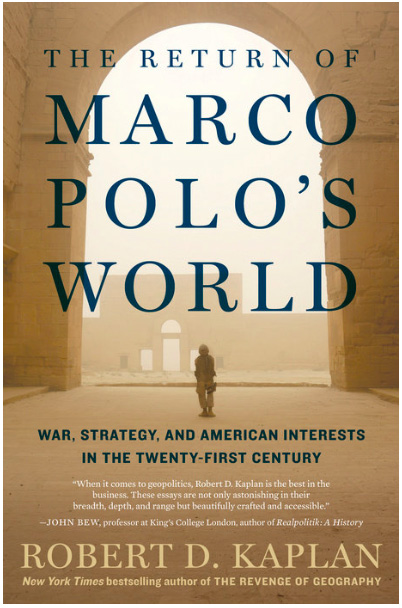 |
The signs of "imperial fatigue" that the United States is giving—a less willingness to provide world order—contrast with the destiny of projection on the globe that its nature and size imprint on it. "The United States is doomed to lead. It's the sentence of geography," writes Robert Kaplan. "No. The United States is not a normal country (...), but it has the obligations of an empire."
Between the reality of a great power whose foreign policy has entered a new phase – a certain withdrawal on the international scene, begun by Barack Obama and continued by Donald Trump – and the demands of its national interest, which in Kaplan's opinion requires an assertive presence in the world, moves the new book by this well-known American geopolitical author.
Unlike his previous works – the most recent is Earning the Rockies. How Geography Shapes America's Role in the World (2017) – this time it is a volume that collects his essays and articles published in different media over the last few years. The longest, which gives degree scroll to the compilation, was commissioned by the Pentagon; The headline of another of the texts, also from 2016, heads these lines.
Eurasia
When Kaplan talks about returning to the world of framework Polo is meaning two things. The main one is the new link that is emerging between China and Europe thanks to the increased trade, symbolized by the new Silk Road, which gives rise to a long essay about the materialization of what until now was only an idea: Eurasia. The other meaning, which he develops further elsewhere in the book, has to do with the new international order we are moving towards, which he calls "competitive anarchy": an era of greater anarchy compared to the time of the Cold War and the one we have known since then (the Cold Age). average of framework Polo was also a time of multiple powers.)
Kaplan is one of the authors who is most concerned about the emergence of Eurasia. The arrival of Syrian migrants in Europe has made it dependent on the vicissitudes in the Middle East, showing that the internal borders of the supercontinent are fading. "As Europe disappears, Eurasia becomes cohesive. The supercontinent has become a fluid and comprehensive unit of trade and conflict," he writes. And with the cohesion of Eurasia, the specific weight of the world shifts from the Asia-Pacific to the Indo-Pacific or, as Kaplan also calls it, the Great Indian Ocean.
Realism, Morals and Values
Among the many strategic aspects that Kaplan considers in relation to Eurasia, perhaps one important caveat can go unnoticed: much of China's success in its Belt and Road course depends on Pakistan acting as the leader of the Belt. core topic which, in the middle of the arch, gives it completion and at the same time sustains it. "Pakistan will be the main recorder of China's ability to link its [land] Silk Road through Eurasia with its [maritime] Silk Road through the Indian Ocean," Kaplan said. In his view, Pakistan's instability, even if it does not end up causing the country's collapse, could well limit the effectiveness of the great project Chinese.
Outside of that Eurasian chapter, the book is an argument, sober and calm, with Kaplan's always elegant prose, of the principles of realism, understood as "a sensibility rooted in a mature sense of the tragic, of all the things that can go wrong in foreign policy, so that caution and caution knowledge of history are embedded in the realistic way of thinking." For a realist, "order comes before freedom and interests before values," because "without order there is no freedom for anyone, and without interests a state has no incentive to project values."
Kaplan discusses these considerations in articles dedicated to the thought of Henry Kissinger, Samuel Huntington, and John Mearsheimer, all of them realists of different stripes, of which he is close, especially the first: Kissinger's reputation will only increase over the years, he says. On the other hand, he rejects that Trump's foreign policy can be framed in the realist doctrine, because the American president lacks a sense of history, and that is because he does not read.
Kaplan presents realism as a sensibility, rather than a guide with recipes for acting in crisis situations, and certainly on various pages he enters into the discussion on whether the external actions of a State should be guided by morality and the defence of values. "The United States, like any nation – but especially because it is a great power – simply has interests that are not always consistent with its values. This is tragic, but it is a tragedy that has to be embraced and accepted." "Because the United States is a liberal power, its interests – even when they are not directly concerned with human rights – are generally moral. But they are only secondarily moral."
A new north-south motorway on the eastern edge of the EU aims to be the entrance gateway to Europe for goods from China.
Seven European countries have joined forces for the project Via Carpatia, a motorway that will run from Lithuania to Romania and Greece, increasing the interconnectedness of the EU's eastern region. Its promoters envisage the infrastructure as part of the new Silk Road, as a gateway to Europe for goods arriving from China and the rest of Asia.
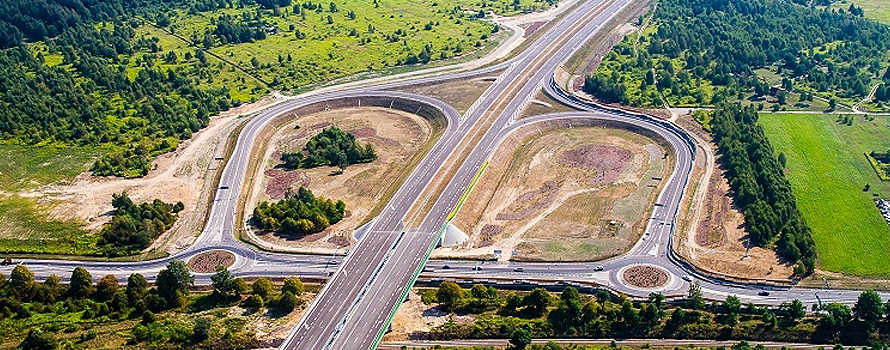
▲Polish motorway section to be part of the project Via Carpatia [Generalna Dyrekcja Dróg Krajowych i Autostrad Oddział w Rzeszowie].
article / Paula Ulibarrena
Via Carpatia is a European route; it is actually an ambitious project interstate motorway linking the Baltic Sea and the Black Sea. The route will start in Lithuania, in the city of Kaunas, then continue through Poland, following the Bialystok-Lublin-Rzeszów route; it will then enter Slovakia to cover the Presov-Kosz section, and in Hungary it will run through Miskolc-Debrecen.
On the territory of Romania, the route will be divided into two directions, one towards the port of Constanta on the Oradea-Arad-Timisoara-Lugoj-Deva-Sibiu-Pitesti-Bucarest-Constanta route and the other penetrating into Bulgaria via the future bridge over the Danube at Calafat-Vidin and with the possibility of extending the project to Greece, in the Mediterranean, at the southern border of the European Union.
The project Via Carpatia was C in 2006, when the transport ministers of Poland, Lithuania, Slovakia and Hungary signed a joint declaration to extend the network trans-European transport network by creating a route to connect these four states along a north-south axis. In 2010, project was joined by Romania, Bulgaria and Greece to extend the new route through their respective territories.
Andrzej Adamczyk, Poland's Minister of Public Works, said in May 2017 that the entire 600-kilometre route of this infrastructure in Poland will be completed by 2025. According to him, Via Carpathia "will allow the full potential of the provinces it passes through to be developed, providing a boost for the poorer regions of eastern Poland and the economies of the area".
The purpose of project is to promote the economic development of the region, providing facilities for the development of small and medium-sized business and the creation of technology parks, which should contribute to the creation of employment and enhance research and innovation.
This initiative currently reinforces other policies that also have the goal development of infrastructures in Eastern Europe, such as the 3 Seas Initiative. But it also opens the door to other more ambitious projects, such as the 16+1 and the new Silk Road, both launched by the People's Republic of China.
Connection with China
The 16+1 mechanism is a Chinese initiative aimed at intensifying and expanding cooperation with 11 EU Member States from Central and Eastern Europe (CEE) and 5 Balkan countries (Albania, Bosnia and Herzegovina, Bulgaria, Croatia, the Czech Republic, Estonia, Hungary, Latvia, Lithuania, Macedonia, Montenegro, Poland, Romania, Serbia, Slovakia, Slovenia) in subject investment, transport, finance, science, Education and culture. In the framework of the initiative, China has identified three possible priority areas for economic cooperation: infrastructure, high technologies and green technologies.
The Riga Declaration, a document issued in November 2017 at the China-ECO summit, sets the roadmap for such cooperation. In the Latvian capital, Chinese Premier Li Keqiang and the leaders of Central and Eastern European countries agreed to enhance cooperation internship and increase people-to-people exchanges. In particular, the leaders reaffirmed their desire to achieve effective connectivity between ports on the Adriatic, the Baltic and the Black Sea, through roads and the use of inland waterways.
"The Adriatic-Baltic-Black Sea port cooperation will be a new engine for China-ECO cooperation," said Liu Zoukiu, researcher of the Chinese Academy of Social Sciences, adding that the combination of Chinese equipment, European technology and ECO markets will be a great model for cooperation between China and these 16 nations.
Trade between China and Central and Eastern European countries reached $56.2 billion in 2015, up 28 per cent from 2010. Chinese investment in these 16 nations exceeded $5 billion, while in the opposite direction investment was $1.2 billion.
issue The data also shows that the number of goods train lines between China and Europe has increased to 39 since the connections began in 2011. 16 Chinese cities regularly operate these convoys to a dozen European cities. Beijing's interest in the CEE countries lies precisely in the fact that they are Europe's gateway to the new Silk Road.
|
The future north-south connection, Baltic-Black/Mediterranean [viacarpatia.eu]. |
The European Gateway to the New Silk Road
The 21st Century Silk Road, which the Chinese government has dubbed One Belt One Road (OBOR), is not an institution with clearly defined rules, but rather a strategic vision: it alludes to the ancient Silk Road, the commercial and cultural link between East and West for more than two millennia. The new route aims to be a connectivity network consisting of maritime and land-based economic corridors linking China and the rest of Asia with the Middle East, Europe and Africa. In this way, OBOR puts continents, oceans, regions, countries, cities, international and regional organisations on contact .
The new diplomatic language appears as a seductive tool of Chinese soft power, exported through the routes of trade and diplomacy that reach the gates of Europe. Evoking the historical framework of harmonious coexistence and mutual cultural enrichment, Chinese officialdom defines the "Five Principles of Peaceful Coexistence" as OBOR's core values: (1) mutual respect for sovereignty and territorial integrity; (2) agreement mutual non-aggression; (3) agreement mutual non-intervention in internal affairs; (4) equality and mutual benefit; (5) peaceful coexistence.
China seeks to diversify its trade routes and partners, opening up new consumer markets. At the same time, it is securing supplies of energy and raw materials. Finally, it is expanding its logistical structure and building a China-centred trade network .
Beijing set up a state investment fund, the Silk Road Fund, in 2014 with a capital of $40 billion, earmarked for One Belt, One Road investments. China insists that such financial institutions are not intended to replace existing ones, but rather to complement and collaborate with them in a spirit of inclusiveness and mutual benefit. However, voices from the United States and the European Union have raised some concerns.
US and EU suspicions
US analysts speak of the Chinese European Century (and warn that as investment and trade with Europe grows, so will Beijing's influence over European policies. Indeed, the Asian Infrastructure Investment Bank (AIIB) already has funds of $100 billion, or 50 per cent of the World Bank's capital.
The 16+1 platform was launched to the chagrin of the EU, which was not consulted on the matter beforehand. Brussels observes a status of dependency on the part of some of the continent's poorest countries, caused by a trade asymmetry in favour of China: trains arrive in Warsaw with tons of Chinese goods, but return half-empty. The creation of infrastructure and new production and distribution centres for Chinese goods sometimes progresses beyond the EU's control. Consequently, EU legislative compliance and even European unity itself may be affected.
For the most part, the national interests of European countries seem to be dominated by the pure logic of Economics and lack strategic vision. They have so far made a common and coordinated EU policy towards OBOR impossible. In the absence of unity, Europe is throwing stones at itself and ironically applying to itself the effective "divide and rule" strategy described by the Chinese philosopher Sunzi 2,500 years ago.
New international order
The international order is changing: OBOR, which in paternalistic embrace now encompasses almost all European countries, presents itself as the Chinese alternative to the West's model that has dominated the world until now.
The US is being replaced as the world's leading Economics and losing its political hegemony to the rise of China. This is demonstrated by the reactions of Washington's staunchest allies in Europe, London and Berlin, in joining the OBOR initiative without much hesitation and despite US warnings.
China proposes to create a new international economic and financial order together with Europe. The most notorious milestone of this close partnership is China's injection of up to €10 billion into the EFSI, a decision agreed between Beijing and Brussels in April 2016, making China the largest investor in the so-called Juncker Plan. Together, they can generate economic growth and the creation of employment by building and modernising infrastructure networks that improve intra-European connectivity. This can facilitate the opening up of European products and services for export to new markets and improve their conditions for entrance to China's own market. Europe can benefit from improved connectivity with other hitherto remote regions.
The project 'One Belt-One Road' aims to consolidate China's rise as a superpower.
Xi Jinping's ambitious initiative to connect China to the rest of the Eurasian continent may prove costly and difficult. But unlike the overland route through the Central Asian republics, the sea route may not take long to become a reality on certain stretches, as China has already built some ports along part of the route.
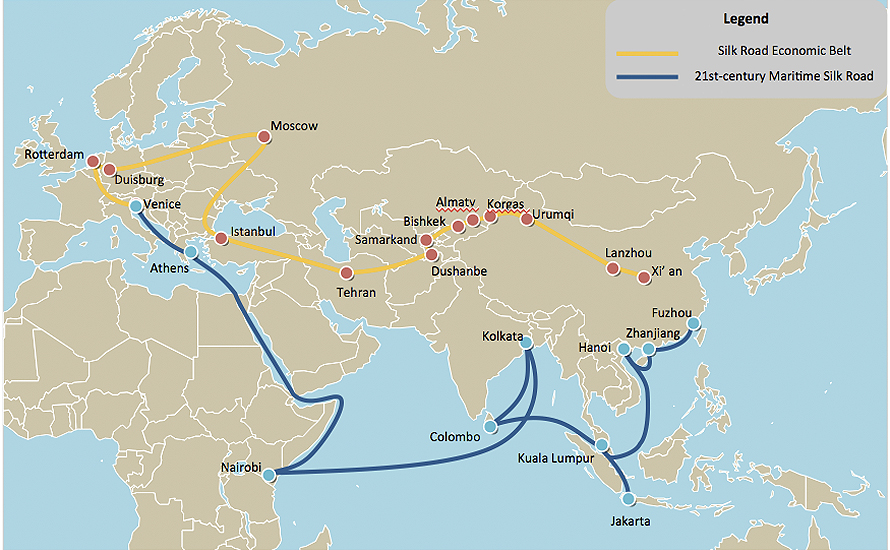
▲The land and sea routes of the Chinese initiative [yourfreetemplates].
article / Jimena Puga Gómez [English version].
Following Chinese President Xi Jinping's 2013 revitalisation of the ancient Silk Road speech , the initiative that started as an idea has become the Beijing government's biggest economic challenge: a revolution that, if realised, will change the Asian continent's passenger, freight and hydrocarbon transport infrastructure, as well as high-tech. Dubbed OBOR-OneBelt-One Road, the plan is intended to be the core topic of China's rise as a regional superpower.
The OBOR initiative is a grand plan to reshape China's strategic environment, project Beijing's economic power, secure the communist country's access to energy and mineral supplies, and boost economic growth in the west of the People's Republic. OBOR seeks to achieve these goals by fostering greater and faster connectivity between China and Europe through intermediate points in Central, West and South Asia, as well as with Russia.
For its part, the maritime route that will form one of the pieces core topic of the OBOR initiative, also known as the Silk Road of the 21st century, counts on the fact that seven of the ten largest ports in the world are in China and, as is well known, these infrastructures make the Asian giant an important exporter of port services management .
The Eastbound Maritime Silk Road will start in Fujian province and pass through Guangdong, Guangxi and Hainan, before heading south to the Strait of Malacca. From Kuala Lumpur, the Route will continue to Kolkata and Colombo, then cross the rest of the Indian Ocean towards Nairobi. From there, it will travel through the Horn of Africa, seeking to cross the strategic Gulf of Aden to the Red Sea. Beijing's plan aims to create sufficient infrastructure to allow Chinese ships to safely reach the Mediterranean after sailing through the Suez Canal. But the People's Republic's ambition does not stop at the EU's doorstep, as China wants to reach Athens via the Aegean and from there to Venice, where it will look for land routes to move its goods throughout the Union. Chinese investment has focused, among other things, on the port of Piraeus, with a new logistics centre, and on the development of a network of logistics infrastructures through the Balkans and Hungary.
The South Pacific has also been included in this strategic route map devised in Beijing. Thus, the maritime Silk Road has two routes. The first, as mentioned above, originates on China's east coast and, via the South China Sea, aims to establish strategic control of the Spratley Islands, the Strait of Malacca and the entire Indo-Pacific area, including the Bay of Bengal, in order to reach the heart of Europe. The second sea route will also cross the South China Sea to direct its ships to the coastal ports of the South Pacific. In this way, China would also control the routes for the essential raw materials that come from Latin America.
Although this is a long-term economic project deadline , the Chinese government has already begun the construction of certain infrastructures and the necessary negotiations with different countries. A clear example is Germany. The European Union is China's largest trading partner , while the People's Republic of China is the EU's second largest provider . sample . Germany is a country that not only enjoys an excellent reputation as a reliable partner in China, but is also regarded as "Europe's trade gateway". test This is why, at a meeting in Duisburg, the world's largest inland port and an important transport and logistics hub in Europe, Chinese President Xi Jinping proposed to Germany "to work together to realise the ambitious project of the revival of the economic belt of the new Silk Road of the 21st century". Germany and China are currently connected by the Chongqing-Xinjiang-Duisburg international railway line.
The ports built by China at Hambantota and Colombo in Sri Lanka, the China-Suez Economic and Trade Cooperation Zone in Egypt, Kazakhstan's negotiation of the right to clear its imports and exports through the Chinese port of Lianyungang, and a new alliance between ports in China and Malaysia are further examples of China's ability to leverage its new skill as a port moderniser and manager to support its strategy.
The New Silk Road initiative is a project that will require multi-billion dollar investments in order to build smooth, safe and efficient transport infrastructures. The effects of this economic network ensure benefits not only for China, the leader of the OBOR initiative, but also for all countries affected by it. However, the financing of project is still a question mark that needs to be clarified.

